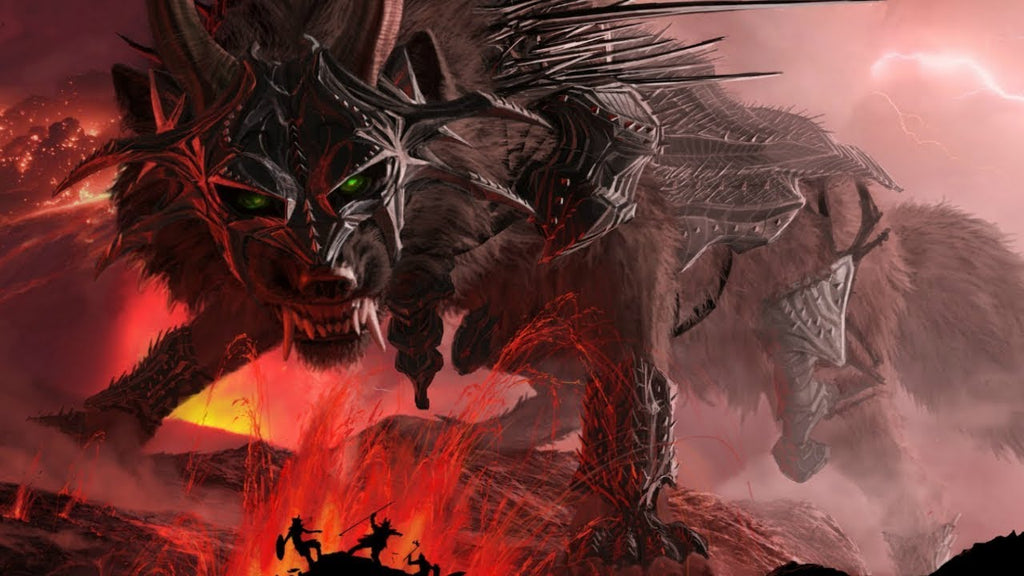How and Why Did Odin Die In Norse Mythology?
Dwelling deeply into Norse mythology gets me to realize that no glory lasts forever. After all, glory is just a flicker of emotion and it will end soon. In Norse mythology, the death of Odin and the fall of Norse Pantheon are the golden example of this. This blog post is to illustrate how and why Odin the Allfather die in Norse mythology.
No matter which Odin you read about, the original version of Odin from Norse mythology lost in the hand of Fenrir the Giant Wolf.
How Odin Died in Norse mythology?
Everything was destined long before the day of Ragnarok. That Norse Pantheon would collapse after the death of Odin. And the Allfather was swallowed by the Giant Wolf Fenrir.
All of Norse gods attempted to prevent Ragnarok. Because they knew that, once the prophecy became reality, the glory they had been living in came into an end. Knowing that the death of Baldur was the first sign of Ragnarok, Frigg the Queen of Asgard travelled around the cosmos to ask all creatures not to harm Baldur.

Jormungandr the Serpent, Hel the Queen of Underworld, and Fenrir the Wolf
Odin well prepared an army of the most elite warriors for the final battle. Gods also tried to separate three notorious figures that triggered off Ragnarok: Fenrir the Wolf, Jormungandr the Serpent, and Hel the Queen of Dead.
But no matter how hard they had tried, what had to come finally came.
The most unwanted alarming sound from the Asgard guardsman woke up every on in Asgard. Grabbing their weapons, they were ready for this final battle of Ragnarok.
They met their sworn enemies in this battle. Thor and Jormungandr slew each other. Loki and Heimdall killed each other. Freyr lost to the firing blade of Surtr the giant. And Odin fell before the sharp jaws of Fenrir the Wolf.

It was Fenrir that finally put an end to Odin the Allfather as well as a full stop to the glory of Norse Pantheon. The surviving god, Vidar, who was also a son of Odin, took revenge for his father's death and finally slew Fenrir.
Why Did Odin Have To Die?
It was fair to say that Odin lost in Ragnarok battle. But at least, he, as well as the Norse gods, tried to prevent the bloodiest battle.
However, from the beginning of Norse mythology, Odin's death was predicted from the moment he slew Ymir the first giant in the cosmos. Blood for blood, and the giant army would never stop until they finally avenged for the death of Ymir.
Odin and the gods, while attempting to prevent Ragnarok, pushed their life into the edge of death. Odin captured Fenrir to raise him in Asgard under his observation. He cast Jormungandr into the dark ocean and banished Hel into the world of the dead. This gradually harboured the hatred toward Norse gods within every giant. And the last straw must have been the cruel punishment to Loki and their children, Nafri and Nari (or Nari and Vali).

Odin and Thor tried to tie down Loki with the entrails of one of Loki's sons.
The fate of Norse gods, after all, was in their hand. They did everything for the good of their clan which was reasonable, to be fair.
All Odin did for his clan and to the giant nourished the revenge inside the giant. But after all, everything the Allfather did was to pave the way for the better things incoming and try his best to minimalize the damage to the cosmos.
When everything came to a close, Ragnarok turned out to be just a transition part, from this period to the other, from the glory of Norse Pantheon to the collapse and new rebirth. Both the death of Odin and the fall of Norse Pantheon seemed like the end of the world but it was just the end of Norse glory. A new chapter was unfolded and the surviving gods continue to build up the world from the ruins of war.




